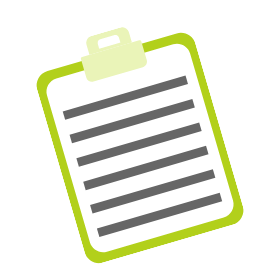ClicData – OpenCRM Integration: a Real World Case Study with Hydro-X
24 Feb 2021
When Hydro-X Water Treatment Ltd first signed up to use [opencrm] back in 2014, they provided water treatment and hygiene services UK wide. Since then, they have expanded to become Hydro-X Group Ltd incorporating Air, Fire, Training and Engineering services as well as Water becoming the largest independent company within their industry. They have over 35 years of experience in reducing risks for their customers.
Needless to say, their CRM requirements have grown over the years as well.
One of the things that has made it possible for their Management team to stay on top of the day-to-day realities of running a business this complex is one very particular system.
You might expect me to say [opencrm] here, but it’s not…it’s actually ClicData. Although our own integration with that particular system plays an important role as well.
In this article, we’re going to dive into how Hydro-X use ClicData as a clear and compelling dashboard to connect information from [opencrm] and other systems to keep the whole business running smoothly.
Goal:

The Work Itself
- The first step was identifying what information they needed from which of their various systems. This included Opportunity and Activity data from OpenCRM, sampling and lab results populated from the engineers’ mobile app via a Google Sheet, and a few other vital systems.
- The data was brought in initially from OpenCRM using a series of Reports. This information is kept up to date using ClicData’s option for scheduled imports.
- At first, Hydro-X completed much of the dashboard building using their own initiative, supported by the customer service teams at both OpenCRM and ClicData. Later, as these dashboards became more important to more people, they brought in a dedicated developer to build some of the more complex elements.
- Each dashboard was built to be easy to navigate, as well as filterable, so any member of the team could access the information they needed with just a few clicks.
Results
The specifics of each dashboard are not something that we can share, due to the sensitive nature of the data within them.
But we can talk a little bit about how these dashboards have impacted the business, as well as individual teams.
Although not an exact replica of the dashboards being used by the team at Hydro-X, this video walks you through just a few examples of the types of information they are using:

- List of users with up/down arrows for performance
- Opportunities pipeline
- Number of Activities by salesperson
- Speedometer showing how close getting to target of number of calls
- Make all of these filterable by region/user/date
- List of upcoming appointments and who will be attending them (along with results)
Sales Management
We will start with the sales team. Although each member of the sales team can see their Opportunity Pipeline and Activity counts within [opencrm], their sales dashboards provide this information in a much more dynamic way.
They can see how these numbers relate to their colleagues, the regional breakdown, and how each person is progressing towards their targets. And how much more needs to be done to get their next bonus.
This one-stop-overview is geared more towards motivation. Both in terms of their performance as well as regular use of the CRM system. A similar, albeit more detailed, dashboard used by the Management team is used for more general forecasting and business planning.
So, you can see how just a few bits of information from [opencrm] being fed into a business intelligence tool like ClicData can make a real impact in a sales team.
The Team in the Field
The next set of dashboards we would like to share with you are built primarily using data coming direct from Hydro-X’s engineers in the field.
Water and Air Engineers record their service visit findings directly into an app. This has enabled the Management team to measure performance and ‘same day paperwork’, along with reports being sent within ‘24hrs of works being completed’.
By bringing this data into ClicData, the team were able to get a quick view of the results, and action accordingly.
Hydro-X developed a Sample app that allowed the information the engineers have entered to show up almost instantly in their dashboards. It send this information directly to the labs and links them using a specific reference number. This whole process started with engineers filling in paper forms that were then digitised.
This change improved their efficiency in leaps and bounds. And it is not over yet, they’ve got plans to streamline the process even more.
What does the future hold
The use of ClicData has given individuals on the ground and in the management team a much-improved view of the business. And how their performance impacts on it.
And the team at Hydro-X are not stopping there. They have plans to expand their use of the [opencrm] – ClicData integration (as well as connections with other systems) to make similar improvements in several other areas of their business, including marketing and finance.
So, watch this space!
